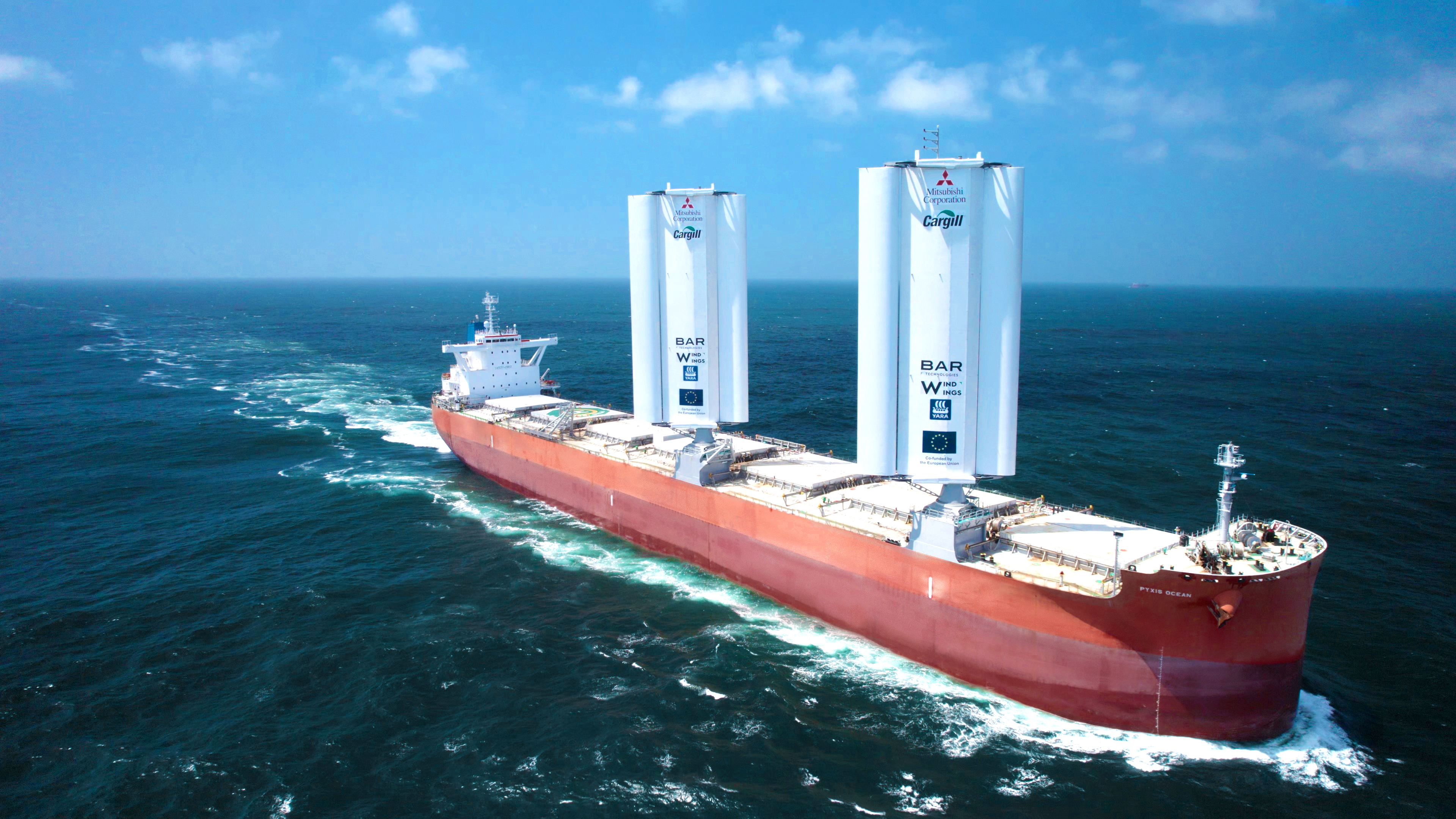
The shipping industry is responsible for 3% of global carbon emissions, putting it under the spotlight for environmental upgrades. Two game-changing vessel designs have now been produced with the help of EU funding, along with retrofit technologies for existing cruise ships and bulk carriers. Maritime sustainability is a key EU priority on the continent’s journey to slashing carbon emissions while creating opportunities for green economic growth and jobs.
Around 90 % of the world’s goods – from cars to cashew nuts – are transported by sea. This is bad news for the environment, with a fully laden container ship burning around 150 tonnes of bunker fuel per day as it criss-crosses the globe.
The ultimate goal is to create zero-emission vessels. But even if new, fully sustainable transport ships were to hit the market today, replacing the entire global fleet of 100 000 ships would be logistically and economically impossible.
Clean air is on the horizon, though. The CHEK project is developing novel solutions through a combination of new vessel designs and technology retrofits for existing vessels – including the return of sails.
“The main challenge posed by the creation of zero-emission vessels is not so much technology development, but rather the integration of already existing, disparate innovative technologies,” explains Suvi Karirinne, coordinator of CHEK and director of the University of Vaasa Energy Business Innovation Centre (VEBIC).
“By bringing together leading innovation companies, we were able to break down these barriers to create very interesting synergetic solutions.”
Sailing into the future
CHEK began by taking inventory of available technologies from project partners. Most of these ranged from technology readiness level (TRL) 1 to 4, which covers basic research up to early proof of concepts and laboratory-validated results.
Led by ship design firm Deltamarin, the team began generating ship concepts based on digital modelling. “In the first generation, the models were largely based on measurement data from reference vessels,” says Karirinne. “Those following involved new hull generation, and simulating the interactions between the ship’s systems and our technologies.”
The project’s advances aren’t restricted to in-lab experiments. In August, the bulk carrier Pyxis Ocean set sail for Paranaguá in Brazil. The result of years of planning and preparation, Pyxis Ocean is the world’s first cargo ship fitted with WindWings: rigid, retractable sails that harness wind power to reduce fuel consumption and carbon emissions.
While it’s too early to draw detailed conclusions related to the wings’ performance, Karirinne notes that the first test results are encouraging. “We’re talking about a 7-month series of voyages. The results will be highly valuable to accelerate the testing, troubleshoot and learn from both our data and the ship crew.”
Investing in green tech
CHEK is more than just a set of sails. The project’s partners accelerated a host of technologies, including Silverstream Technologies’ air lubrication system (which allows ships to glide on a cushion of bubbles), HASYTEC’s ultrasound antifouling hull prototypes (which prevent barnacles and other sea life from accumulating on submerged surfaces), and Climeon’s waste-heat-to-power technology.
Beyond individual ships, itinerary optimisation technology produced by MSC Cruises allows ship operators to plan routes that take account of environmental performance as well as commercial and technical demands. Wärtsilä’s lab test results on innovative hydrogen engine technology hold promise for a future of clean-burning alternative fuels in long-distance shipping.
Several technologies trialled by the project are already making waves, with ultrasound antifouling equipment installed on bulk carriers and cruise liners equipped with weather routing systems that take account of prevailing atmospheric and maritime conditions to plot the most efficient passage. “Our objective is to demonstrate the effectiveness of the integrated CHEK technologies in enhancing energy efficiency, reducing fuel consumption and lowering emissions before the project’s conclusion,” says Karirinne.
Due for completion in May 2024, CHEK is piloting a course to offer compelling evidence to stakeholders keen to invest in pioneering ocean technologies. The consortium has plans for dedicated workshops and continuous engagement with key audiences, and its deliverables will include 2030 and 2050 scenarios for the deployment of its technologies.
“Project partners have already been in contact with potential clients, and we foresee interesting exploitation opportunities at the level of individual technologies,” Karirinne concludes.
MORE INFORMATION
This article was originally published by DG Research and Innovation as part of their success stories series. It is available in six other languages
- Reference
- SOCIETAL CHALLENGES - Smart, Green And Integrated Transport
- Project duration
- 1 Jun 2021 - 31 May 2024
- Project locations
- FinlandGermanyItalyNetherlandsNorwayPolandSwedenSwitzerlandUnited Kingdom
- Overall budget
- €9 999 996
- EU contribution
- €9 999 996100% of the overall budget
- Project website
- https://www.projectchek.eu/
